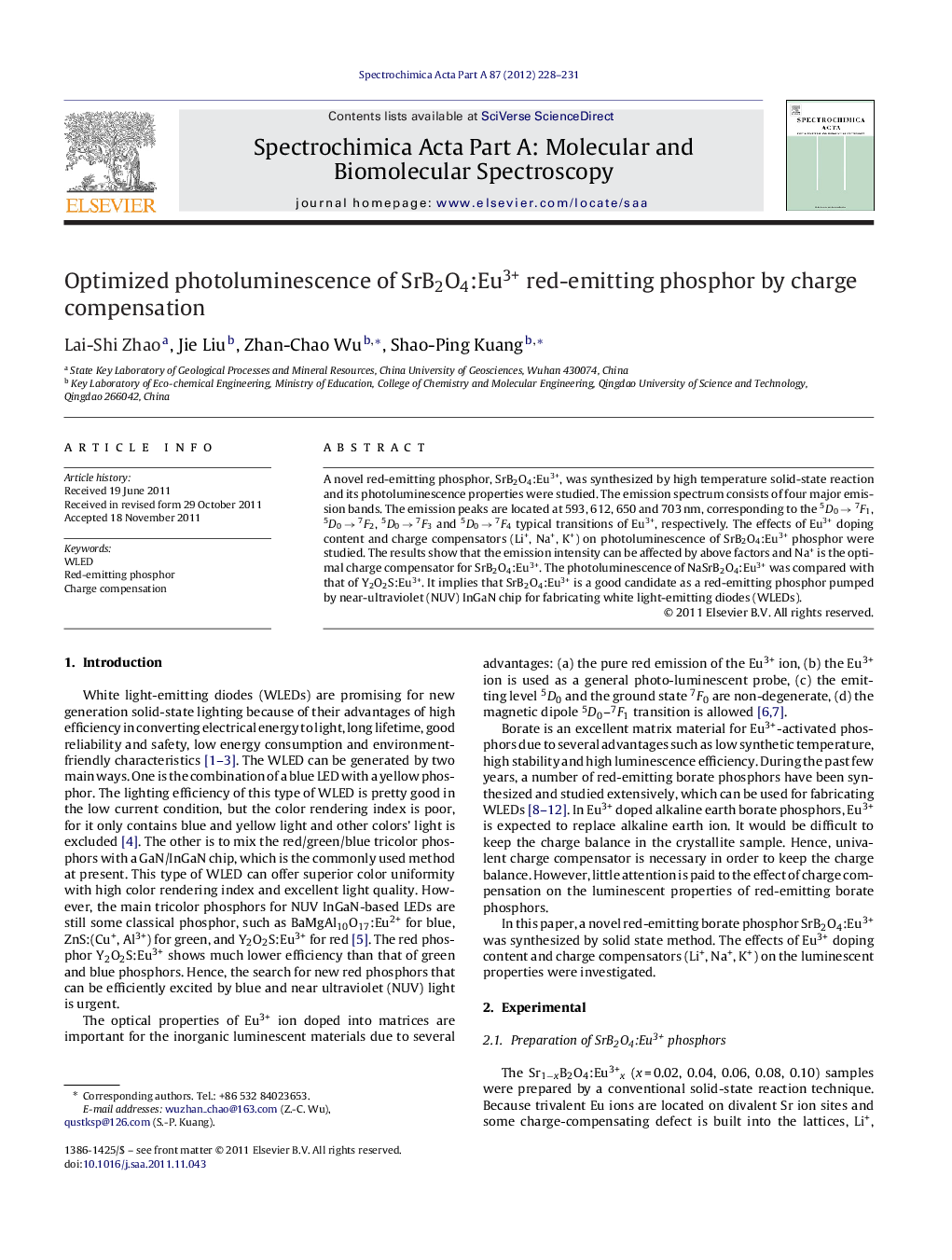| Article ID | Journal | Published Year | Pages | File Type |
|---|---|---|---|---|
| 1235837 | Spectrochimica Acta Part A: Molecular and Biomolecular Spectroscopy | 2012 | 4 Pages |
A novel red-emitting phosphor, SrB2O4:Eu3+, was synthesized by high temperature solid-state reaction and its photoluminescence properties were studied. The emission spectrum consists of four major emission bands. The emission peaks are located at 593, 612, 650 and 703 nm, corresponding to the 5D0 → 7F1, 5D0 → 7F2, 5D0 → 7F3 and 5D0 → 7F4 typical transitions of Eu3+, respectively. The effects of Eu3+ doping content and charge compensators (Li+, Na+, K+) on photoluminescence of SrB2O4:Eu3+ phosphor were studied. The results show that the emission intensity can be affected by above factors and Na+ is the optimal charge compensator for SrB2O4:Eu3+. The photoluminescence of NaSrB2O4:Eu3+ was compared with that of Y2O2S:Eu3+. It implies that SrB2O4:Eu3+ is a good candidate as a red-emitting phosphor pumped by near-ultraviolet (NUV) InGaN chip for fabricating white light-emitting diodes (WLEDs).
Graphical abstractFigure optionsDownload full-size imageDownload as PowerPoint slideHighlights► A new red-emitting phosphor SrB2O4:Eu3+ was prepared at low temperature (750 °C). ► The phosphor SrB2O4:Eu3+ shows bright red emissions excited at 394 nm. ► SrB2O4:Eu3+ exhibits appropriate CIE chromaticity coordinates (x = 0.64, y = 0.35). ► Na+ is the optimal charge compensator for SrB2O4:Eu3+. ► NaSrB2O4:Eu3+ shows more excellent photoluminescence properties than Y2O2S:Eu3+.
